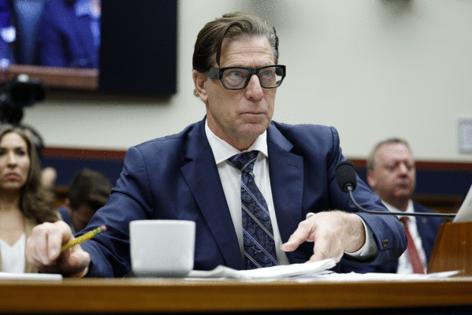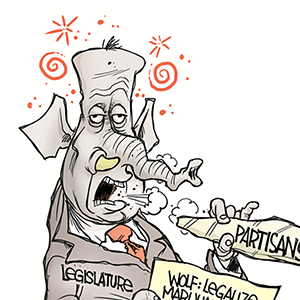FEMA chief resigns after 6 months, criticism over floods
Published in News & Features
WASHINGTON — The Trump administration’s top official at the Federal Emergency Management Agency, David Richardson, resigned on Monday after about six months on the job.
Richardson had no emergency management experience when he took on the role. He came to FEMA from the Department of Homeland Security’s Countering Weapons of Mass Destruction Office, where he was an assistant secretary. Richardson was publicly criticized for FEMA’s handling of catastrophic 4th of July floods, which killed more than 130 people in Texas.
“I agreed to be the acting administrator through hurricane season when others wouldn’t,” Richardson said in an interview Monday.
With days left in the season, which is set to end Nov. 30, “the danger has largely passed,” Richardson added. “I can now leave for other opportunities.”
FEMA Chief of Staff Karen Evans is set to take over from Richardson Dec. 1, a Homeland Security spokesperson confirmed. Evans was previously Homeland Security’s chief information officer during Trump’s first term in office.
Richardson’s resignation was first reported by the Washington Post.
Richardson’s departure marks the second time in recent months that the administration has reset the agency’s leadership. Richardson replaced former Navy SEAL Cameron Hamilton, who was ousted in the spring one day after testifying to Congress that he did not support abolishing FEMA.
Trump has repeatedly suggested that the agency should be eliminated. He launched an independent review council to weigh in on FEMA’s fate by the year’s end.
In his first speech to staff at FEMA, Richardson said he would “run right over” anyone who tried to get in his way, according to a recording obtained by Bloomberg News. In a subsequent meeting in early June, Richardson said he was not previously aware that the U.S. had a hurricane season, according to a Reuters report. The White House claimed he’d been joking.
Hurricane season — which officially started on June 1 — is usually FEMA’s busiest time of the year, but the U.S. has not experienced a landfalling storm so far.
The largest FEMA operation on Richardson’s watch was the response to devastating floods in Texas Hill Country, which struck over July 4th weekend. Richardson waited more than a week before visiting the disaster zone to meet with survivors, triggering blowback from his staff and from former FEMA officials who said Richardson should have shown up sooner.
Richardson told Bloomberg News he had been on vacation when the floods initially broke out, adding that he coordinated the response by phone.
Frustrated with the Trump administration’s stance toward FEMA — and Richardson’s leadership in particular — nearly 200 current and former FEMA staffers signed an open letter in late August criticizing cuts to disaster-related funding, programming and staffing, saying such moves made the nation less prepared for catastrophes.
In response, FEMA put the small number of employees who publicly signed the letter on administrative leave and launched an internal investigation. Some of the known participants were required to submit to questioning by FEMA investigators without legal representation present or risk losing their jobs, as Bloomberg reported.
Most FEMA workers were exempt from widespread furloughs amid the government shutdown, which ended Nov. 12. Trump has continued to approve funding for disaster response and recovery in recent weeks, signing off on requests for aid from governors of Alaska, Nebraska and North Dakota.
_____
With assistance from Hadriana Lowenkron.
_____
©2025 Bloomberg L.P. Visit bloomberg.com. Distributed by Tribune Content Agency, LLC.







Comments